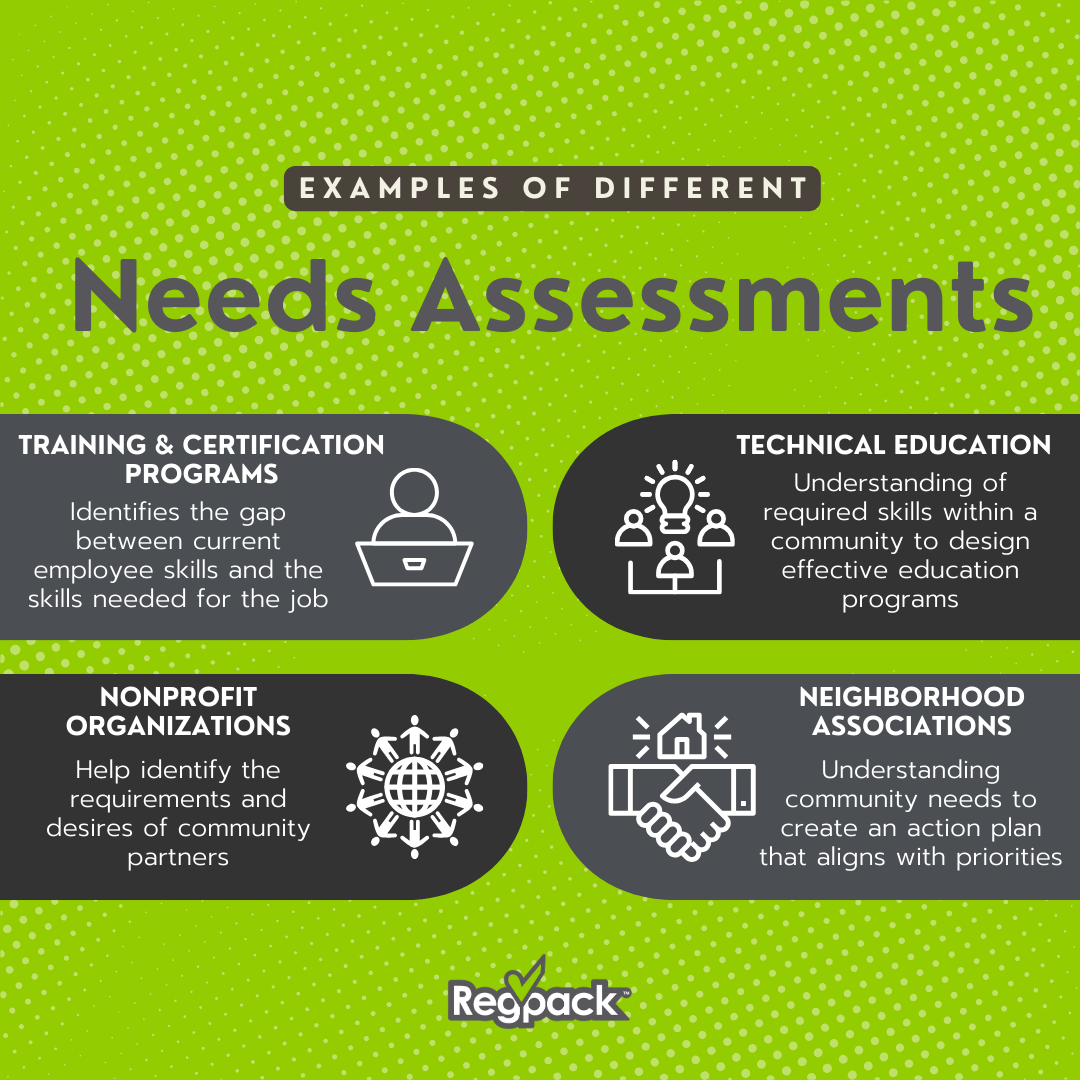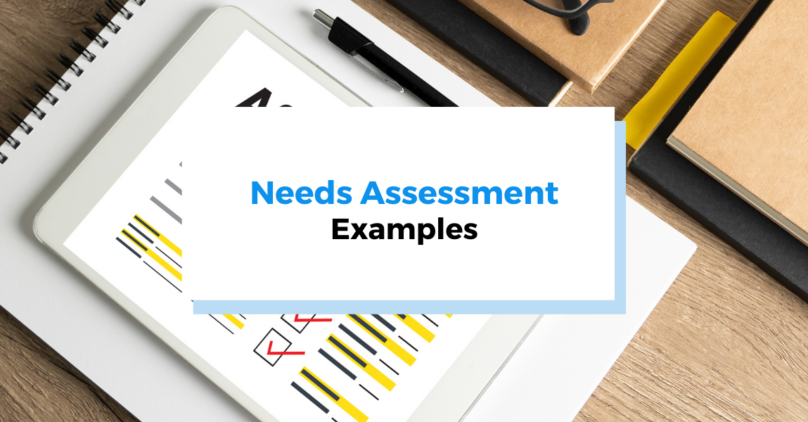Understanding the specific needs of your target audience is fundamental to the success of any project or initiative. A thorough and methodical needs assessment can be instrumental in achieving this understanding. But what, exactly, is a needs assessment?
A “needs assessment” is a systematic process for determining and addressing gaps between current conditions and desired conditions, often used for improvement in individuals, education/training, organizations, or communities. It’s about identifying the distance between ‘where we are now’ and ‘where we want to be’. It involves identifying the needs that exist and prioritizing them to direct valuable resources towards impactful solutions.
A Needs Assessment template serves as a guide, allowing teams to follow the same structure and achieve a consistent collection of in-depth information. It helps identify gaps, define objectives, and develop an action plan—it is essentially a blueprint to success. A well-prepared template ensures that all standard elements of the needs assessment are covered and that a consistent approach is maintained throughout the process. From community members’ specific needs to resource allocation, a needs assessment template can capture it all.
Now that you have a basic understanding of a needs assessment and its template, let’s discuss how user management solutions like Regpack can facilitate this process. Regpack is an online solution specializing in organizing and managing registrations and payments—it can be a useful tool for conducting needs assessments. With its easy and efficient services, you no longer need to worry about technicalities and can focus on the most important aspect: ensuring that the needs of your target audience are effectively identified and met. Whether it’s organizing an event, running a camp, or managing a mission trip, Regpack is here to simplify the process, providing you the freedom to focus on what matters.
The Process of Conducting a Needs Assessment
Embarking on a needs assessment journey begins with a firm grasp of your target audience and an understanding of the community’s needs. This forms the foundation of your needs assessment process.
Needs Analysis
The first step of the process is the Needs Analysis. This is an in-depth exploration of the current situation. As a project manager, your task here is to gain a clear understanding of the current program, what it provides, and where it falls short. Even though it might seem intimidating, it’s essential not to shortcut this step, because an accurate and comprehensive needs analysis will set up the entire assessment for success.
A key component of the needs analysis is gathering and studying relevant data. Focus groups and open-ended questions can play a critical role in this stage. Focus groups are small and diverse groups of people whose reactions are studied about a new idea, product, or feature in guided or open discussions. They provide you with qualitative insights on community members’ perceptions, attitudes, and feedback. Open-ended questions, on the other hand, encourage focused and meaningful answers. They help get more specific, detailed, and often unexpected insights.
Gap Analysis
The Gap Analysis is where you take the information gathered during your needs analysis and identify specific areas where improvements are necessary. A gap analysis will highlight areas that require attention and provide a clear path toward the action plan. It’s all about identifying the desired outcomes and comparing them with the current state. The difference between the two is the identified gaps.
Throughout the whole process, an Assessment Template can act as your compass. It provides structure to your assessment, ensuring continuity and consistency, making data collection, analysis, and assessment results interpretation much easier. Needs assessment templates can vary widely based on specific needs, but they typically include identification of the issue, potential solutions, resource requirements, deadlines, and other pertinent information.
Examples of Needs Assessment: Different Sectors and Situations
Now that we understand the process of conducting a needs assessment let’s look at how it is applied in different scenarios. Having practical examples will make it easier to appreciate the crucial role needs assessment plays in a variety of sectors.

Training and Certification Programs
A needs assessment in this situation often focuses on identifying the gap between current employee skills and the skills needed for effective job performance. For example, a hospital organization may conduct a needs assessment to identify what type of training is needed most by its staff. The assessment might reveal a need for advanced technical training for some hospital facility employees. Regpack, with its integrated training program management tools, can be instrumental in running such needs assessments smoothly.
Technical Education
Consider the education sector, particularly the context of technical education. A clear understanding of existing and required skills within a community are fundamentally necessary to design effective technical education programs. Imagine Perkins V – the legislation that governs funding for technical education in the United States. The law mandates a comprehensive local needs assessment to be conducted every two years. Such assessments ensure that the technical education offerings are in sync with the community’s needs.
Nonprofit Organizations
Nonprofit organizations also rely on needs assessments. For instance, a nonprofit aiming to set up a volunteer program in a neighborhood might conduct one to understand the community’s needs and desires for the program. The assessment can help to identify the requirements and desires of community partners, which can inform the design of the volunteer program.
Neighborhood Associations
Consider neighborhood associations working on community development and welfare. They may conduct a needs assessment to understand the community needs, including the requirement for new housing, health centers, or safety measures. This can enable them to create an action plan that aligns with the priorities and needs identified.
From education to nonprofit and community services, needs assessments provide necessary insights delivering in-depth information about current conditions and offering a path toward desired outcomes.
Needs Assessment Templates

While understanding and conducting needs assessments are paramount, effective utilization of a needs assessment template can streamline this intricate process. These templates offer a structured layout for your team to follow, ensuring that all data collection, analysis, and needs identification are carried out in a coordinated and consistent manner.
But how can you make sure your needs assessment template is effective? Let’s break it down. Your template should be designed in a way that it captures all critical stages of your assessment – beginning with clearly defining the need or issue under consideration, followed by a comprehensive collection of data required. It should also have a provision for an in-depth analysis of the collected data.
Your template should facilitate gap analysis, where you can document the differences between your current state and your desired state. This will aid you in identifying your external partners and assessing the available resources and those that are required.
Best practices for deploying needs assessment surveys play a pivotal role in this process. The more people that participate in such surveys, the more accurate their collective needs can be identified and understood. To achieve this, your survey should include both open-ended and closed-ended questions. Open-ended questions offer respondents the chance to share their perspectives and experiences in greater depth and their own words. Simultaneously, closed-ended questions provide consistency across all responses and are relatively easier to analyze.
In addition, organizations such as health centers or hospital facilities may also have specific requirements, so it’s important to customize your template based on these specific needs. For instance, a hospital organization would want to assess various areas such as patient satisfaction, hospital facility improvements, and feedback on their current program.
In the end, there’s no one-size-fits-all approach to designing the perfect needs assessment template. However, it should always serve its purpose – provide a structured method of identifying needs, collect data effectively, carry out analysis, and facilitate action based on the assessment results.
Regpack’s Role in Facilitating Effective Needs Assessments
Whether your organization is running an event, conducting a training program, or managing volunteer onboarding, Regpack’s versatile user management and data handling solutions can help streamline the entire process, including executing a solid needs assessment.
One of Regpack’s most valuable features is its automated communication and reporting system. Imagine carrying out a large-scale needs assessment survey where thousands of participants need to be coordinated, contacted, and their responses captured. Regpack’s automated processes ensure that everyone receives the relevant information and that all their responses are directly integrated into the system, ready for analysis.
In addition, a significant step in the needs assessment process is data analysis. The integrated data analytics tools in Regpack allow you to accurately analyze the collected data, thereby aiding gap analysis and future action plans.
The assessment’s results need to be distributed to all stakeholders, including team members and external partners. Regpack’s report generation feature ensures that you can collate your findings and insights into a well-structured, comprehensive, and easy-to-understand format, ensuring that everyone involved is on the same page.
A well-designed and executed Needs Assessment should be the first step any organization takes when deciding to launch a new project, event, or program. It ensures that your resources are used efficiently, the efforts of your staff and volunteers are directed effectively, and, most importantly, the needs of your community are met. And with Regpack’s support, carrying out this important process becomes significantly easier and more effective.


















